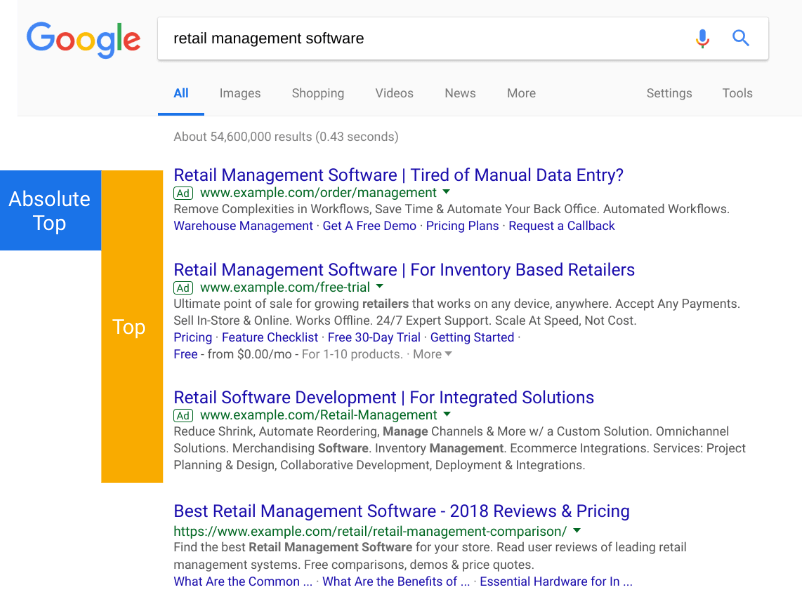As the search engine retires its average position metric, our digital marketing manager, Tom, explores how this change will affect digital account managers.
It was one of Google Ads’ original Search metrics, but September 2019 saw the search engine sunset its average position column. The metric was helpful for many advertisers and account managers. It was the connection to the search page and was more tangible than most PPC (pay-per-click) metrics.
However, with Google Ads’ evolving interface — and ever-changing search engine results page — it was only a matter of time before this handy metric became obsolete. But before you start panicking, here’s what you need to know…
What exactly is average position?
Google defined average position as “a statistic that describes how your ad typically ranks against other ads.” It’s this rank that then determines which order ads appear on the search page.
Why is Google getting rid of average position?
Google hasn’t directly addressed its decision to sunset average position, but with so many changes it’s likely that the search engine doesn’t think it’s a terribly useful metric anymore. As Google displays ads in different ways and alters the layout of SERPs, the average position metric becomes less helpful.
Google’s emphasis on machine learning is also increasingly urging advertisers to move away from manual bidding. We explored Google’s use of AI in more detail in this recent AI blog post.
What are the new alternative metrics?
Last November, Google rolled out two new metrics:
1. Impression (Absolute Top) % is the percentage of time your ads are in the very first position, above the organic search results
2. Impression (Top) % is the percentage of the time your ads are anywhere above the organic search results.
Essentially these two new metrics describe what percent of your ads appear at the top of the page and absolute top of the page. With their introduction, Google’s aim is to give advertisers a much clearer view of an ad’s prominence on the page than average position does.
How does the change affect advertisers?
Average position officially retired on 30th September 2019. This means that advertisers will no longer see the metric in their Google Ads accounts. It also means that any custom columns — or reports using average position — will also be disabled.
From 1st October 2019, advertisers will need to adopt the new Impression (Absolute Top) % and Impression (Top) % as their new metrics. My advice would be to get accustomed to these new metrics as quickly as possible. Grasp what they will mean to your account and redo any automated rules and reports. The faster you adjust to suit these changes, the better off your Google Ads account will be.
Some of our clients are adamant about serving at the very top of Google’s search results page. But this goes hand in hand with high CPC (cost-per-click) rates.
What’s next?
We’ve recently seen better results in terms of CPA (cost per action) from serving the ads in positions two to four. This means that ads are still very visible but have lower CPCs and similar conversion rates.
In June, Google rolled out Target Impression Share — a Smart Bidding strategy that automatically sets bids with the goal of showing your ad on the absolute top of the page, on the top of the page or anywhere on the page of Google search results. Target Impression Share is available either as a standard strategy in a single campaign or as a portfolio strategy across multiple campaigns.
But Google’s push towards automated bidding strategies has been met with mixed reviews from PPC experts. At WebBox, we use a range of different bidding strategies to decide which is best for a specific campaign at a particular time of the year. We’re not fully relying on automated bidding strategies yet as they’re not always delivering the best results. We’ll continue to stay one step ahead and manage each client PPC campaign manually.

Further reading resources
https://support.google.com/google-ads/answer/9263492?hl=en-GB
https://www.wordstream.com/blog/ws/2019/02/27/google-sunsets-average-position












